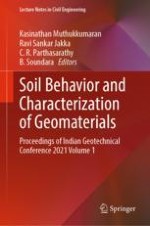This book comprises the select peer-reviewed proceedings of the Indian Geotechnical Conference (IGC) 2021. The contents focus on Geotechnics for Infrastructure Development and Innovative Applications. The book covers topics related to soil behavior and characterization of geomaterials, geotechnical, geological, and geophysical investigation of special topics such as behavior of unsaturated soils, offshore and marine geotechnics, remote sensing and GIS, instrumentation and monitoring, retrofitting of geotechnical structures, reliability in geotechnical engineering, geotechnical education, codes and standards, among others. This volume will be of interest to those in academia and industry.
